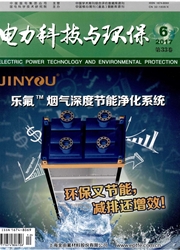

 中文摘要:
中文摘要:
通过工业上的浸渍方法,制备了应用于燃煤电厂脱硝的不同配方的钒钼基脱硝催化剂,对已有活性配方进行了优化。利用XRD,N2-TPD,H2-TPR等技术对催化剂的物理性能、物相分析及氧化还原性进行了表征,解释了催化剂的构效关系。氮氧化物脱除率效果显示,在NO及NH3浓度为500μL/L,O2体积分数为5%,烟气空速达到60 000 h-1的条件下,催化剂达到了在200~400℃范围内脱硝效率在90%以上的效果,N2选择性在250℃以下高于60%,满足了电厂低负荷运行的需要。催化剂比表面积为59.86 m2/g。试验表明工业脱硝钒钼钛基催化剂高钒含量的最佳配方(质量百分比)为3%V-6%Mo-Ti O2,低钒含量活性最佳配方为1%V-7.5%Mo-Ti O2。氢气程序控温还原表征,钒含量及钼含量的提高明显增强了催化剂的氧化还原性,钼的出现提高了钒物种在催化剂表面的分散性,同时提供了更多氧化还原位点,从而导致了低温效果提高的结果。
 英文摘要:
英文摘要:
In order to enhance the deNOs catalyst efficiency used in the power plant, it used a traditional impregnation method to prepare a set of V -Mo -TiO2 catalyst samples. The NO performance, N2 selectivity and applicability were tested. N2 - TPD, XRD were used to characterize the catalyst structural and textural properties. H2 -TPR was used to evaluate the redox ability. A stimulated flue gas concentration was applied in the activity test. As a result, the best catalyst had a 90% above NO performance in the temperature range of 200 -400℃, the N2 selectivity was above 60% under 350 ℃. NO and NH3 concentration of 500 μL/L,.5 vol% 02 and the GHSV of 60000 h^ -1 was the simulated flue gas condition. The best performance catalyst with high V content was 3%V - 6% Me - TiO2. The best performance catalyst with low V content was 1% V - 7.5 % Mo - TiO2. Characterizations showed that the existence of MoO3 enhanced the dispersion of vanadium species on the surface and provided excess active redox sites, thus promoted the SCR performance at low temperature.
 同期刊论文项目
同期刊论文项目
 同项目期刊论文
同项目期刊论文
 期刊信息
期刊信息
